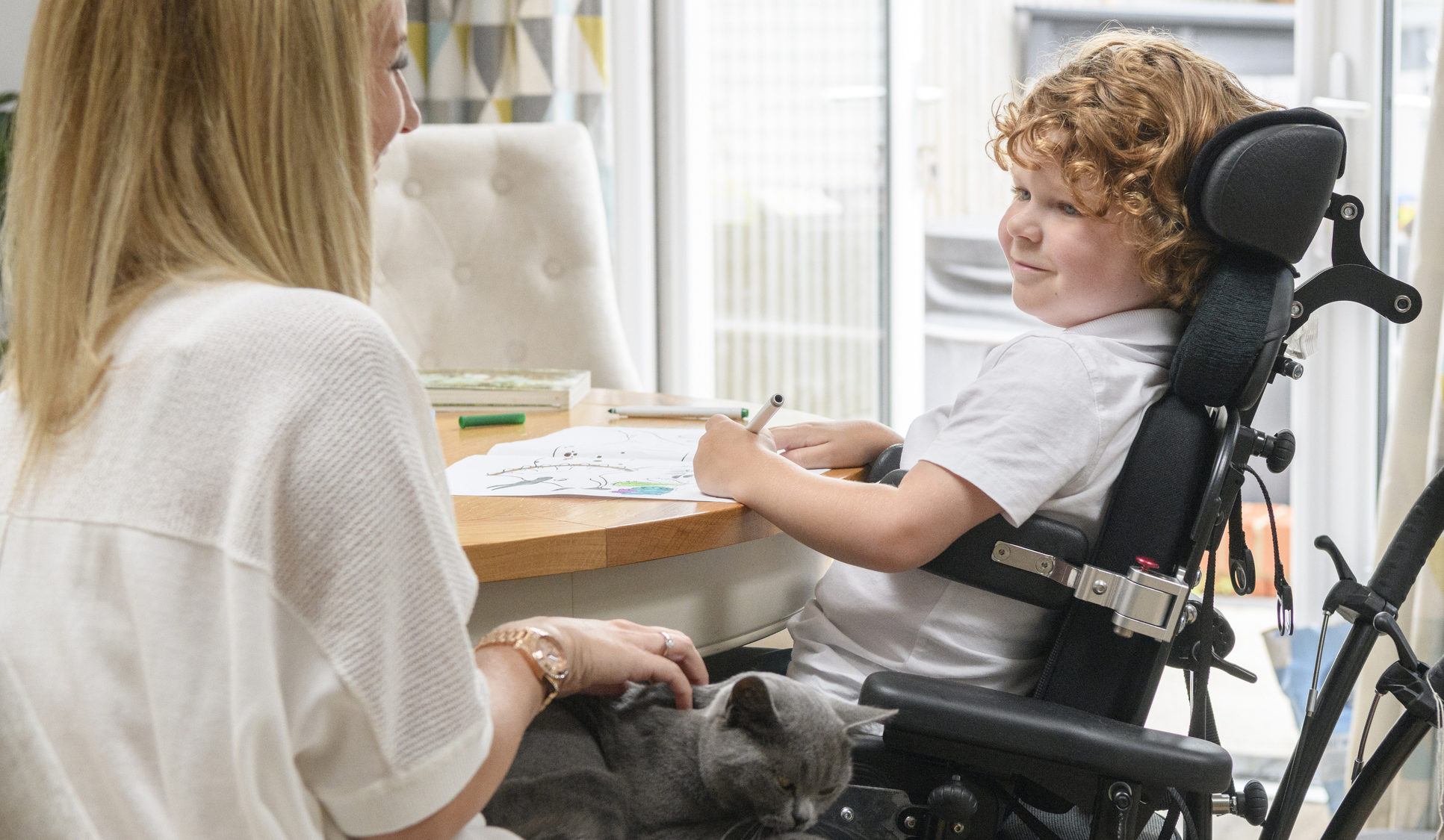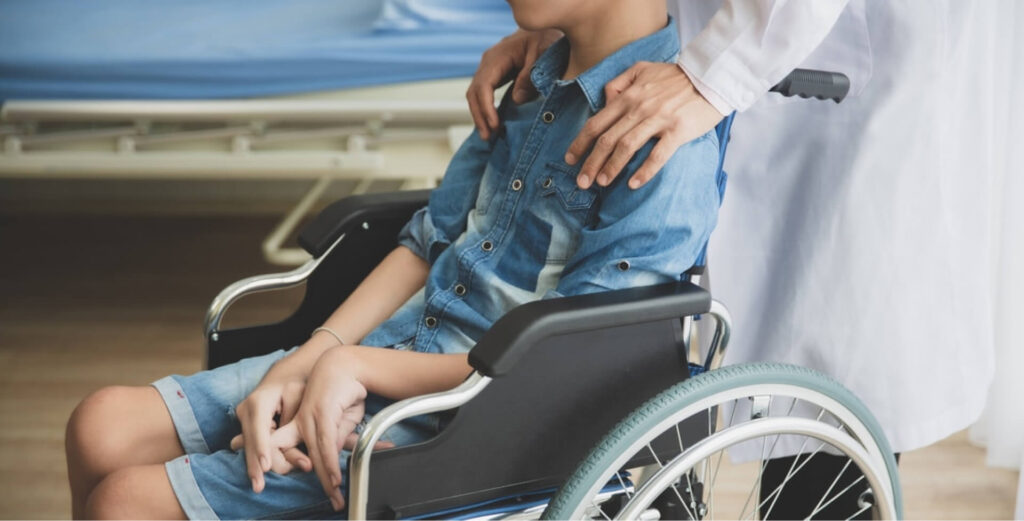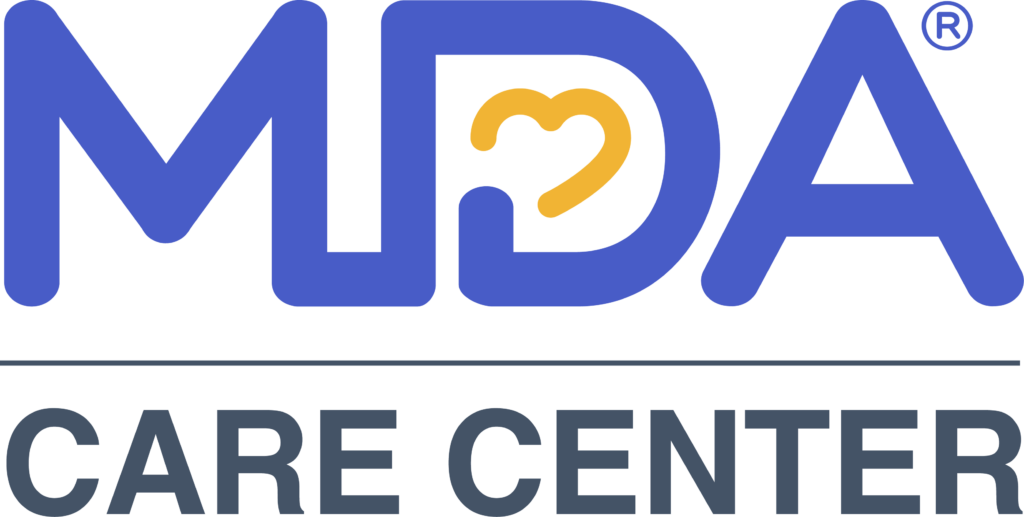
Muscular Dystrophy
What is Muscular Dystrophy?
Muscular dystrophies are neuromuscular diseases that are usually—but not always—inherited. They cause progressive muscle weakness and degeneration.
Muscular dystrophies are caused by abnormal genes that interfere with the production of proteins needed to form healthy muscle.
While there are more than 30 different types of muscular dystrophies, there are nine primary forms of the disease:
- Becker
- Congenital
- Distal
- Duchenne (DMD)
- Emery-Dreifuss
- Facioscapulohumeral (FSHD)
- Limb-girdle
- Myotonic
- Oculopharyngeal

Muscular Dystrophy Symptoms
Muscular weakness is the first sign of muscular dystrophies. This muscle weakness can cause the following symptoms:
- Difficulty getting up from a seated position
- Difficulty raising arms to wash hair
- Exercise intolerance; excessive muscle pain after exercising
- Protruding shoulder blades
- Muscle enlargement

Certain forms of muscular dystrophies may lead to the following:
- Spinal curvature
- Respiratory insufficiency and shortness of breath
- Intellectual disabilities
- Learning disabilities
- Eye defects
- Seizures
Some forms may lead to weakness of the heart and respiratory muscles as the disease progresses.

Muscular Dystrophy Treatments
Treatment for muscular dystrophy aims to maximize quality of life and enable patients to live as independently as possible. Yearly visits to assess for complications of muscular dystrophy are important. Adaptive devices, mobility equipment, genetic counseling, and other strategies give patients the best possible chance at maintaining independence.
A few rare types of muscular dystrophy have specific treatments available that target the underlying disease with enzyme replacement therapy or other novel treatment techniques.
Although there is no cure for muscular distrophy, the following treatments may be used to relieve symptoms:
- Occupational therapy
- Orthotics
- Physical therapy
- Respiratory therapy
- Speech therapy
What is being done about muscular dystrophy?
Finding treatments for muscular dystrophy has been a challenge because of the genetic nature of these diseases. Recently, the ability to manipulate genes and even the ability to insert missing genes has spurned a new era of gene therapy.
Money dedicated to this type of research is more available than ever. As a result, medications that can slow certain types of muscular dystrophy are on the horizon and will hopefully be helping patients in the next few years.
Additional Information
How common are muscular dystrophies?
Muscular dystrophies are rare neuromuscular diseases.The most common form of muscular dystrophy is Duchenne muscular dystrophy, which manifests in early childhood and almost exclusively affects boys.
Who gets muscular dystrophies?
Most forms of muscular dystrophies are inherited, but some occur because of a new gene abnormality or mutation.
How are muscular dystrophies diagnosed?
Physical exams, neurological exams, and evaluation of your personal and family history may be used to diagnose muscular dystrophy.
Additional tests may be used, including:
- Chest x-ray
- Computed tomography (CT) scan
- Echocardiogram (EKG)
- Electromyography (EMG)
- Genetic (DNA-based) tests
- Lab tests
- Magnetic resonance imaging (MRI)
- Muscle biopsy




